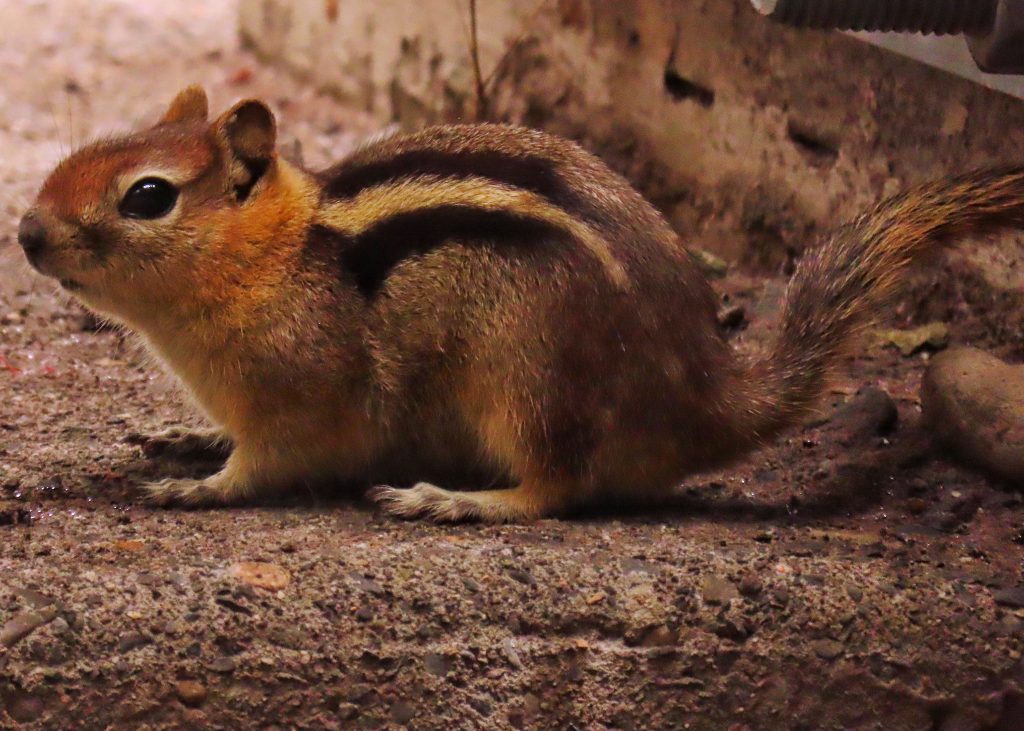
Golden-mantled Ground Squirrels (some sources call them Sierra Golden-Mantled Ground Squirrels) are not rare, but it was only a couple of years ago that I photographed and identified my first one. In my pre-recreational naturalist days I probably did encounter them, since I spent goodly amounts of time in prime habitat, but I probably wasn’t observant enough to note the lack of facial stripes, and thus assumed they were chipmunks. Heck, in those days I didn’t even realize we had a half dozen different species of chipmunks in our region!

Ground squirrels are much different animals than chipmunks though, leading an almost exclusively terrestrial (hence the name) existence, although many desert chipmunks also live in burrows. The similarity of lateral striping probably serves the same purpose as camouflage for Callospermophilus lateralis as it does for many chipmunks, since they inhabit similar environments. As for the lack of these stripes in other ground squirrels, it has been found that all ground squirrels (formerly lumped into the genus Spermophilus) are not as closely related as was thought (see here for more discussion), and the Golden-mantled was moved to the resurrected genus Callospermophilus. Five other genera were also either erected or resurrected to house the ground squirrels, and the only ground squirrels still in genus Spermophilus are strictly Eurasian in distribution.
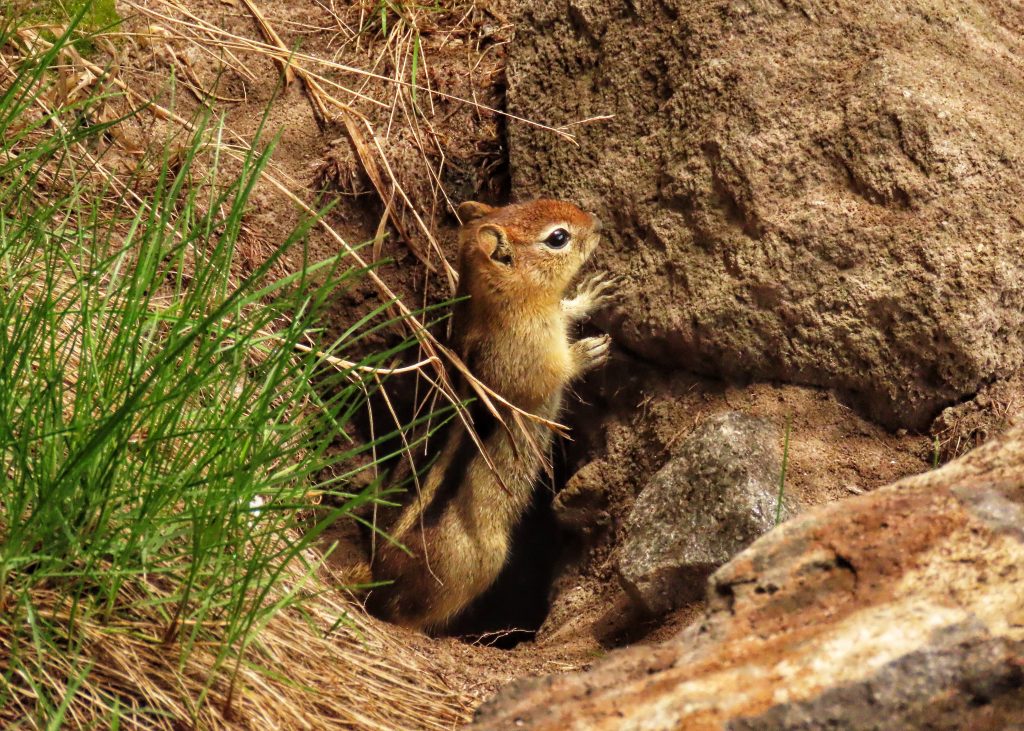
Like many cold climate rodents, Callospermophilus lateralis hibernates through the winter, actually lowering their body temperature over 20 degrees while doing so. Presence of snow or sub-freezing temperatures does not seem to actuate hibernation, for even in mild autumns they enter hibernation at about the same time. But absence of snow does seem required for them to emerge in springtime, regardless of length of day. It is interesting to note that this species does not stay in hibernation mode for the entire winter, having periods of awakening wherein they may eat or drink. Although food consumption may not be strictly necessary, since studies have found that they still have a significant fat layer when they emerge in the spring.
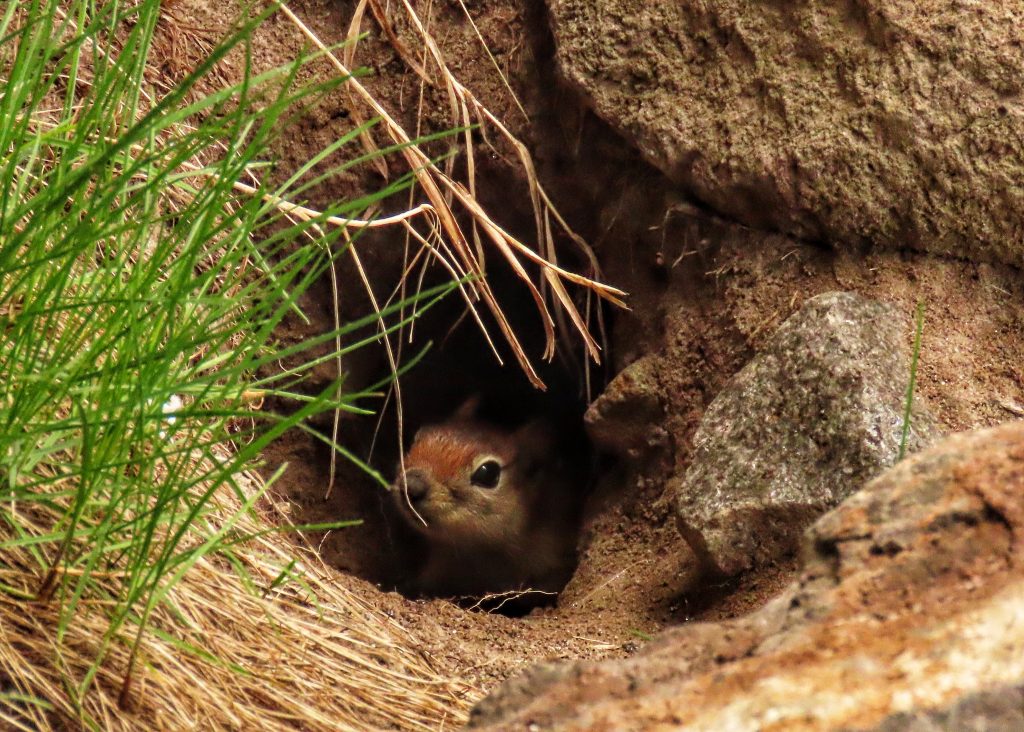
Description-Tawny grey overall and up to a foot long (excluding tail), with a relatively short brown tail, buff to red head with a white eyering , buff to white chest, and a white to cream colored stripe bordered by black stripes down each side.
Similar species-Cascade Golden-mantled Ground Squirrel has lighter and less distinct lateral stripes, a darker back, and is only found in the Cascades north of the Columbia River; other ground squirrels lack lateral stripes; all chipmunks have striped facial markings.
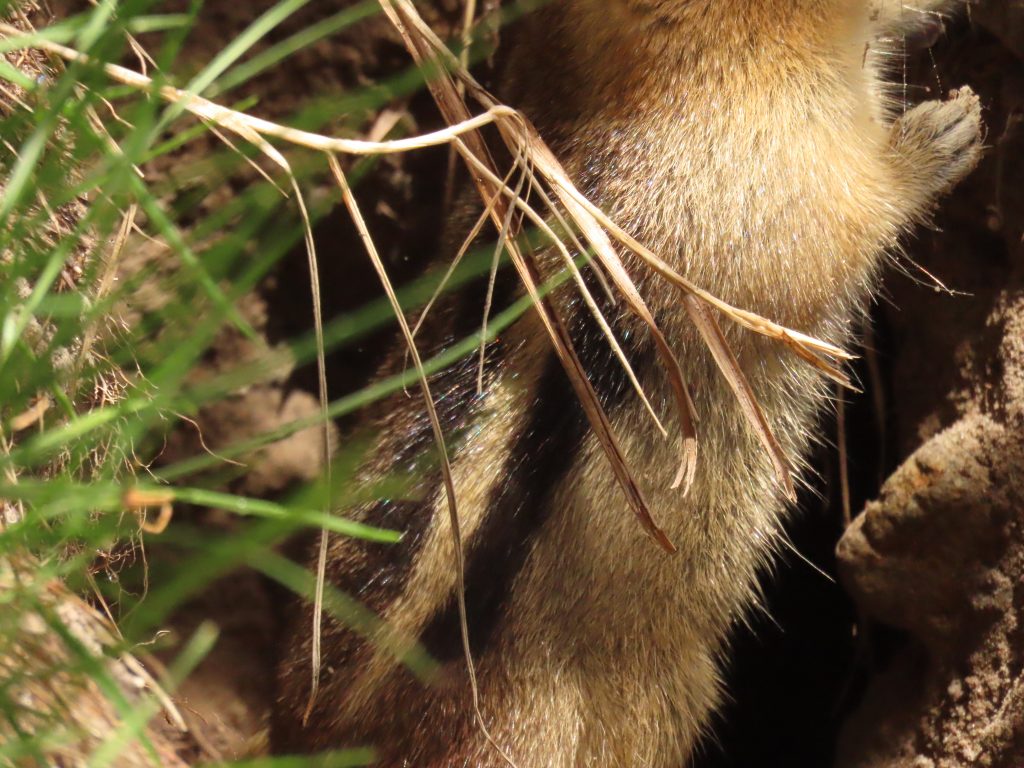
Habitat– Mostly in pine and other coniferous forests at higher elevations;
Range– Throughout the intermountain west; in our region they are found in coniferous forests from the Cascades east, except they are absent from most of Washington state, being replaced in the Cascades by the Cascade Golden-mantled Ground Squirrel.
Eats-They are omnivores, consuming nuts, seeds, flowers, fungi, insects, bird eggs, small reptiles and amphibians, and carrion, even sometimes eating road killed members of their own species.
Eaten by-Owls, hawks, eagles, coyotes, foxes, marten, fishers etc; basically any carnivore which can catch them. Bears are known to try to dig hibernators out of their burrow.
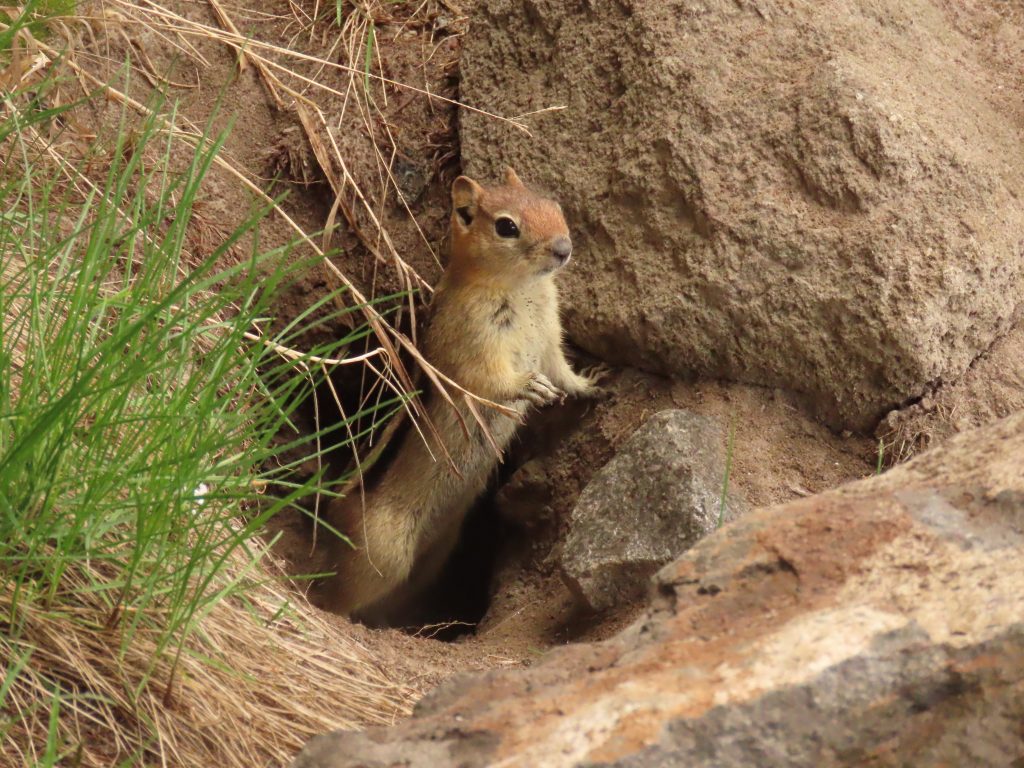
Adults active– March to October; hibernate through the winter months.
Reproduction– Mating occurs soon after spring emergence; Males are polygamous and do not participate in parenting; gestation is about 4 weeks; 2-8 pups are born hairless and blind, but when they are approximately 25% of adult weight they can leave the burrow, and within a month they are weaned.
Etymology of names–Callospermophilus translates roughly from Latin as ‘lover of tough skinned seeds’, a reference to this genus’ preference for seeds of manzanita and pines. The specific epithet lateralis refers to the unusual, for a ground squirrel, lateral stripes. Golden-mantled refers to the tawny coloration on the shoulders, neck, and back of this species.
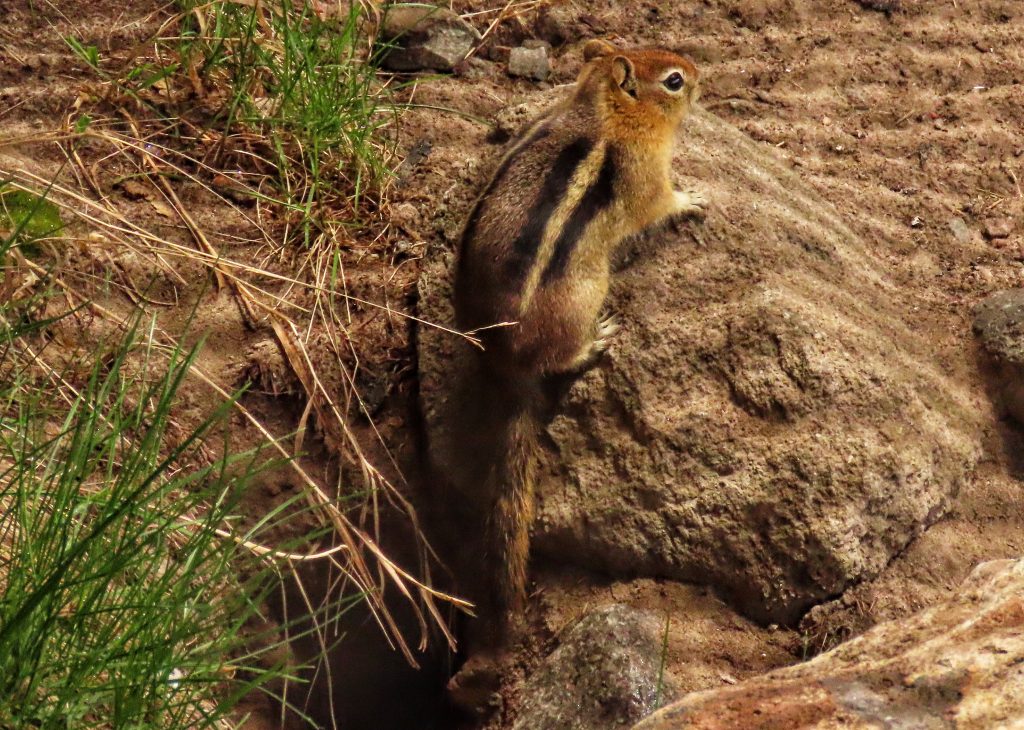
https://animaldiversity.org/accounts/Spermophilus_lateralis/
https://nhpbs.org/natureworks/goldensquirrel.htm
https://en.m.wikipedia.org/wiki/Golden-mantled_ground_squirrel
https://myodfw.com/wildlife-viewing/species/golden-mantled-ground-squirrel
https://www.jstor.org/stable/1375945
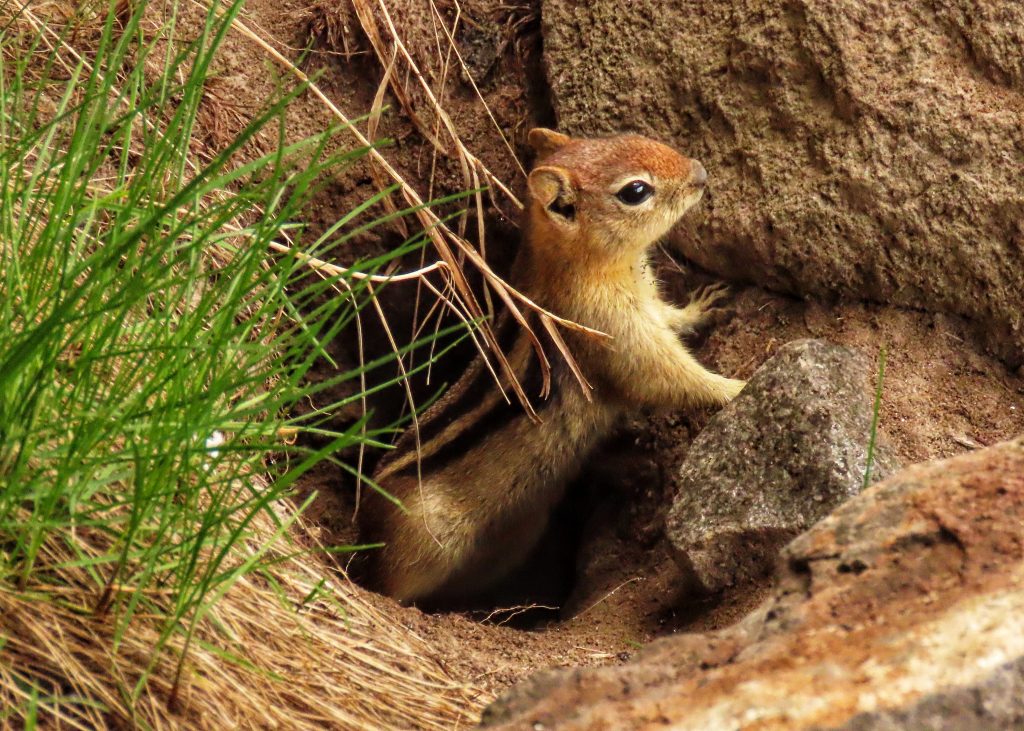
Great information. I had no idea there was such a variety of squirrel-like creatures in the NW.
Typically we have hosted at Tumalo State Park in Bend during the winter, and the only rodentia we see is the Western Gray Squirrel. But we were here last spring, and also discovered California Ground Squirrels, Golden-Mantled Ground Squirrels, and Yellow Pine Chipmunks, all of whom must have been hibernating when we were here in the winter. Sometimes you have to look closely to distinguish the Golden-Mantled GS from the YP Chipmunk, as they both are quick when dashing out to grab a seed from under my feeders. The squirrels seems to willing to hang around more, munching on peanuts.
That is so cool! I’m envious!
Yep, it worked